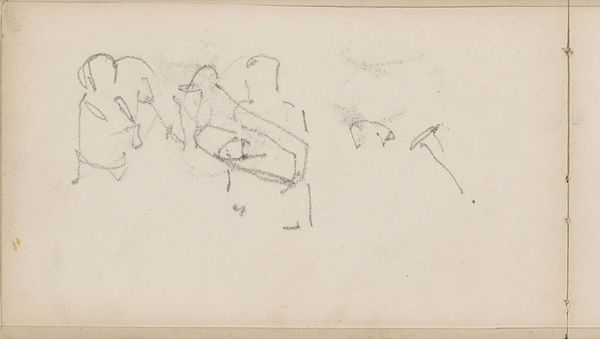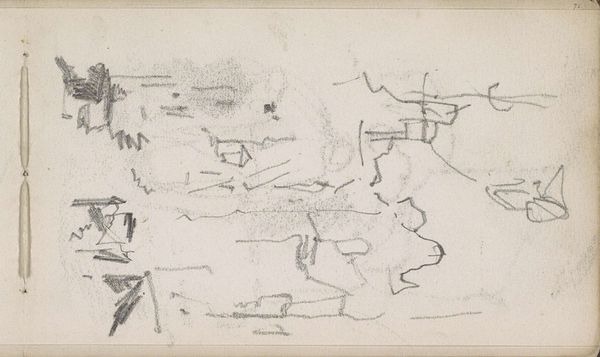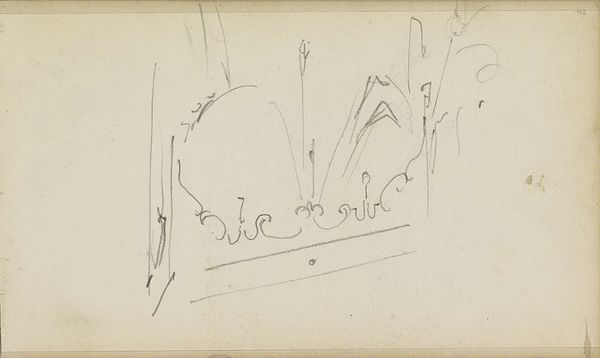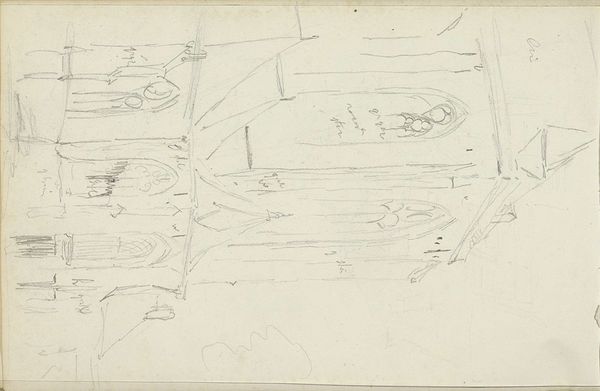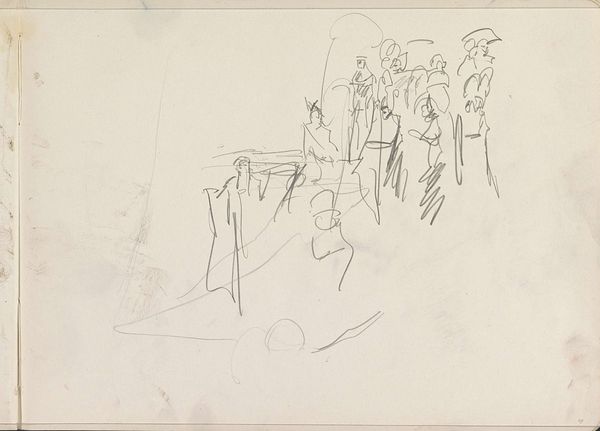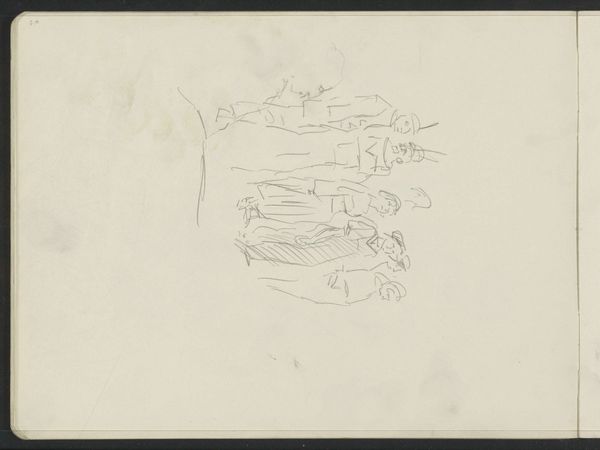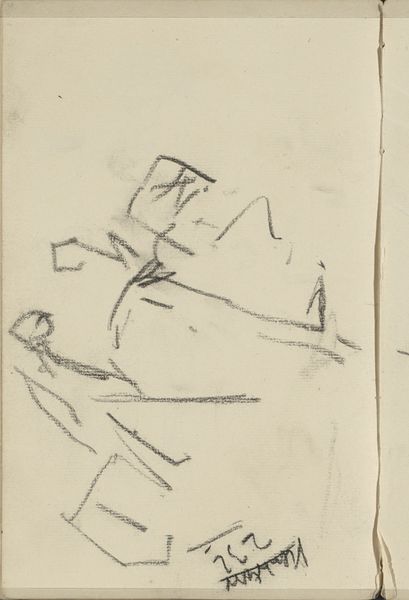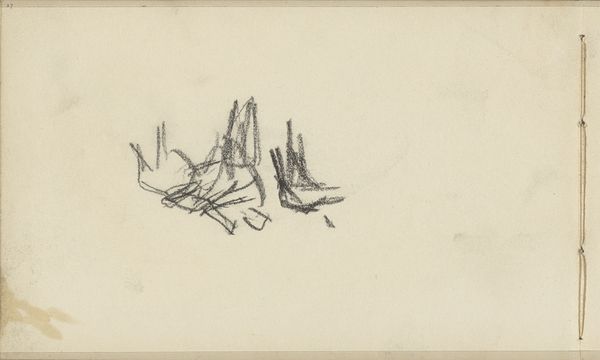
Copyright: Rijks Museum: Open Domain
Curator: Anton Mauve’s pencil drawing, “A Horse Drawn to a Wagon with Kindling,” from between 1848 and 1888, offers a glimpse into rural life, captured with incredible economy. What are your first thoughts? Editor: Immediately, I'm drawn to the visible labor—it’s a stark portrayal of the working class during that period. You can almost feel the weight the horse bears and, by extension, the weight of poverty bearing down on them. Curator: Exactly. Mauve’s placement of the scene within a broader landscape tradition is really significant. Though realistic in style, it touches upon Romanticism too by evoking the sublimity of labor within the Dutch landscape. The drawing allows us to reflect on how people and animals were instrumentalized. How does it invite us to challenge boundaries across art history and broader sociopolitical contexts? Editor: Right, the Romanticism is interesting because it’s subtly embedded. Mauve uses it almost to naturalize this intense dynamic of labor; you hardly get a sense of beauty at first, though his visible pencil strokes really stand out upon further viewing, pointing us to an artistic labour. The kindling, a mundane object, also has value through the worker's toil; wood was essential for survival, for fuel and warmth, therefore connected to a domestic network, as well. Curator: It also points to the complicated relationship between humans, animals, and the environment—essential debates now regarding ethics of labour, resources and power structures across society. I think Mauve quietly pushes the genre-painting framework through his intersectional composition. Editor: Absolutely. The value of art objects often overshadows considerations of the conditions of their making and of what the context brings out to be discussed. With pieces like this, art brings important dialogues that focus on identity, labor and consumption. Curator: Considering its period, the drawing opens conversations beyond the image itself: labor, our social relations, gender… so pertinent now. Editor: For sure, its quiet way of showing labor lets us look at our past material world, while pushing today’s value scales into question.
Comments
No comments
Be the first to comment and join the conversation on the ultimate creative platform.
